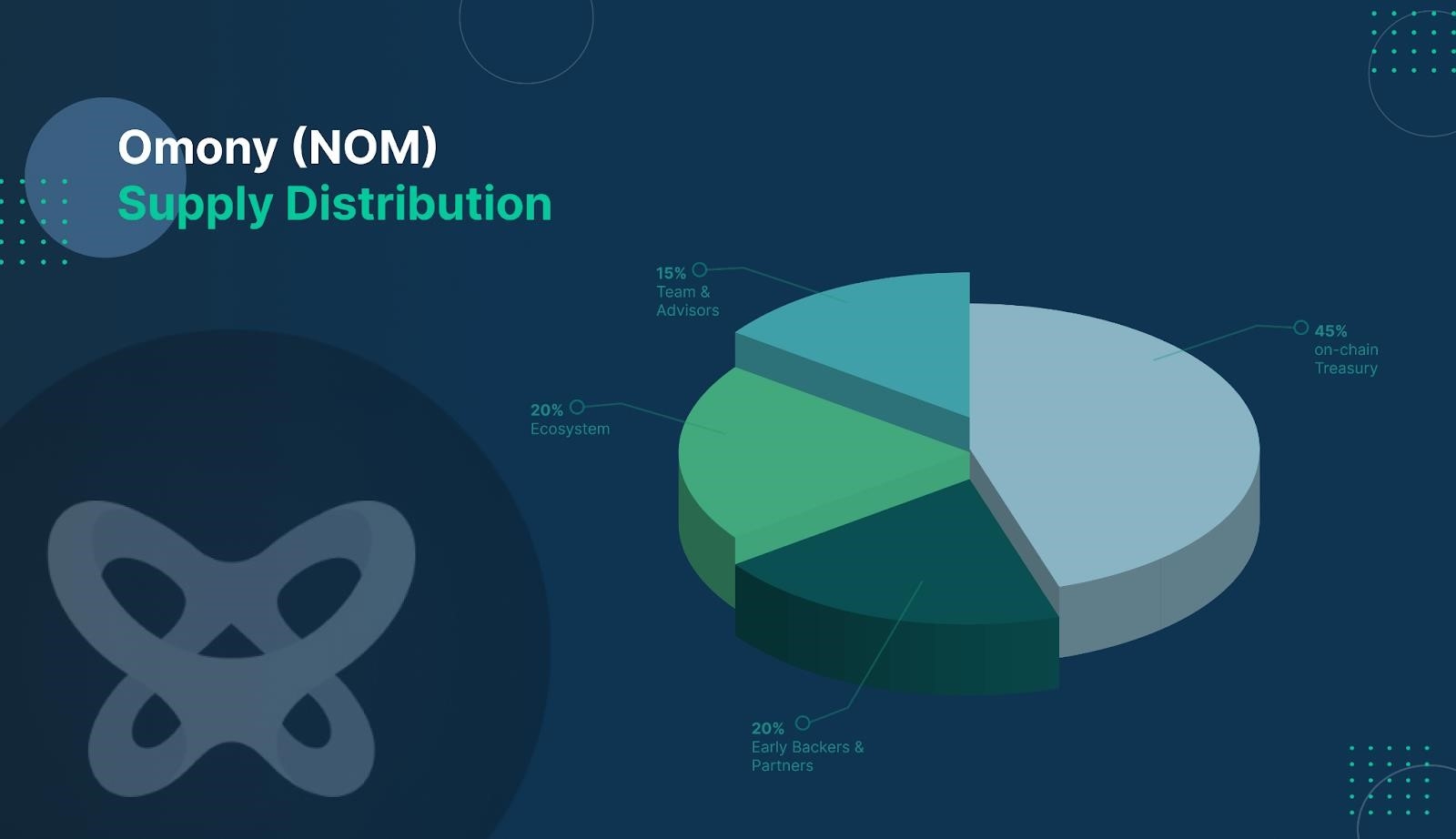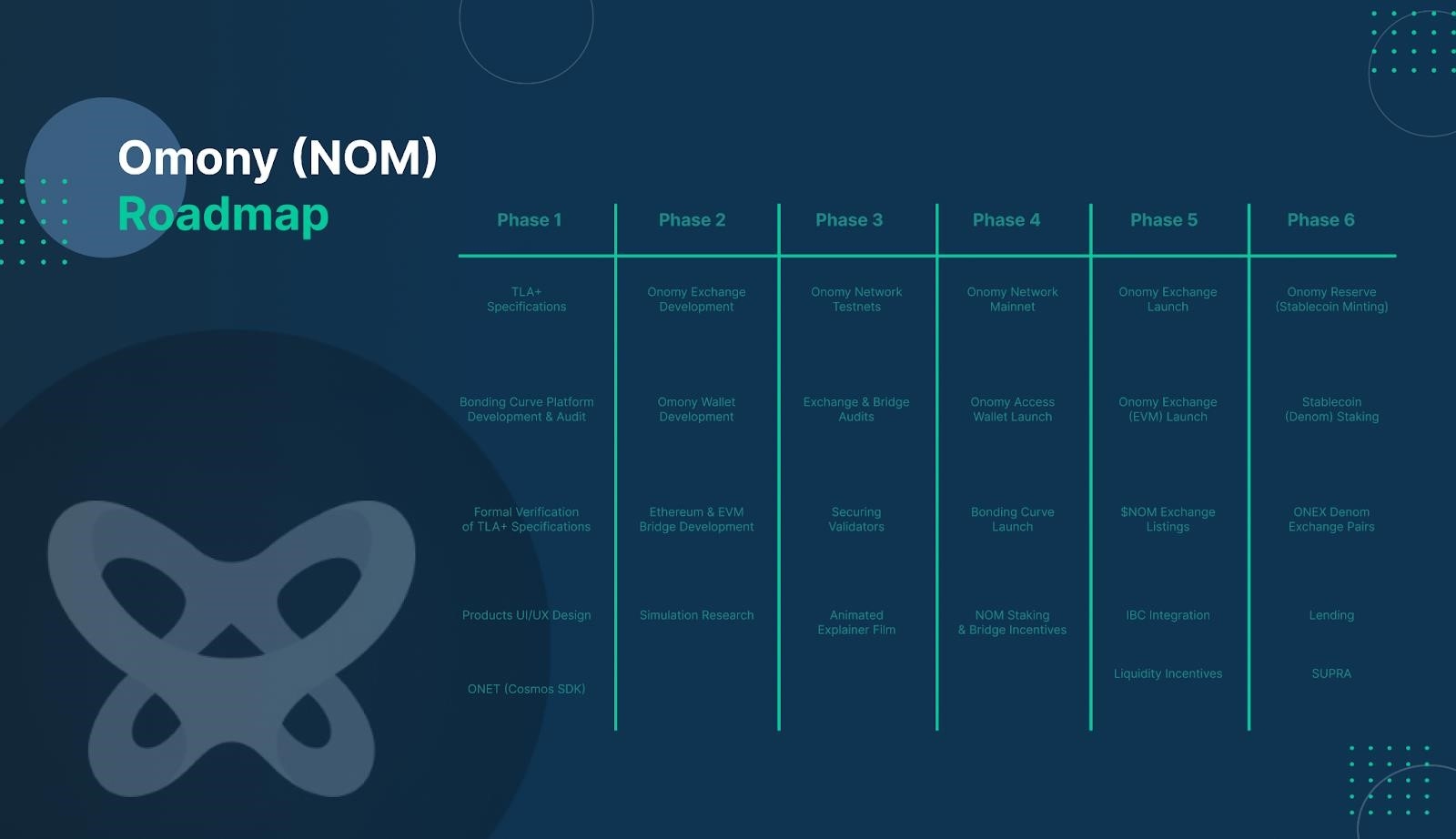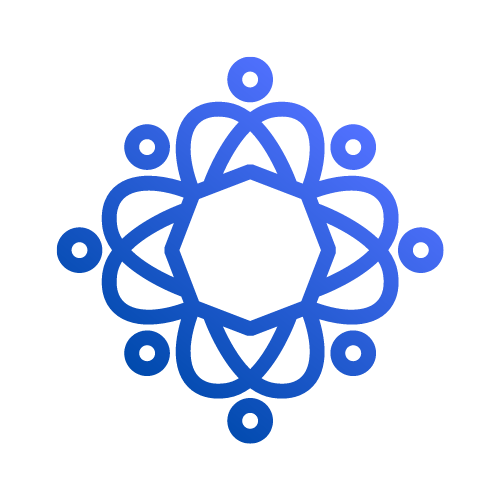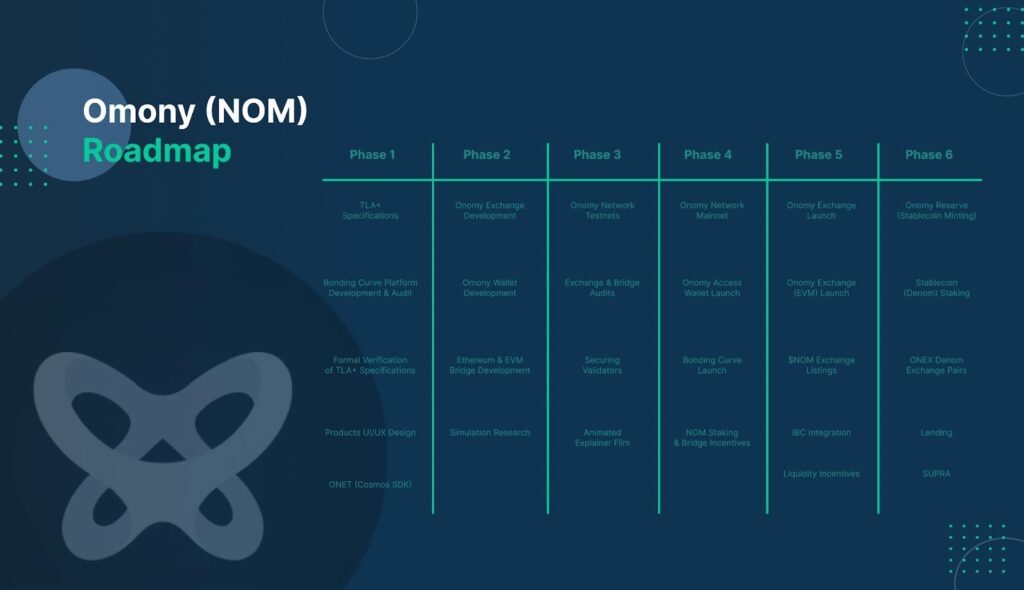Crypto
Onomy Protocol (NOM): A Comprehensive Guide to the Cross-Chain DeFi Platform
This guide dives into the Onomy Protocol, a layer-1 blockchain on Cosmos aiming to be a cross-chain infrastructure for global finance, providing a gateway for users to access DeFi, crypto assets, and Web3. We’ll explore its features, tokenomics, roadmap, and ecosystem, equipping you with the knowledge to understand how Onomy Protocol works and its potential.
What is Onomy Protocol?
Onomy Protocol is a comprehensive cross-chain infrastructure designed to revolutionize global finance by migrating it onto blockchain technology. Its ecosystem consists of three core products:
- Onomy Exchange: A hybrid AMM (Automated Market Maker) with order book functionality, enabling fast and fluid on-chain trading.
- Onomy Access: A cross-chain wallet providing non-custodial storage of assets, empowering users to manage their DeFi portfolios seamlessly.
- Onomy Arc Bridge Hub: A bridge infrastructure that connects different blockchains, facilitating the seamless transfer of assets.
Onomy’s primary focus is on the foreign exchange (forex) market, aiming to empower market makers, individuals, and institutions to trade forex on-chain, unlocking global access to DeFi and decentralized banking.

How Onomy Protocol Works
The Onomy Network is built on the Cosmos SDK, leveraging its robust infrastructure and network of institutional validators to achieve scalability. The protocol utilizes Cosmos’s multi-chain network to create diverse liquidity and native asset availability. The Onomy Arc Bridge Hub connects to partner blockchains like Ethereum and various EVMs through custom, bi-directional bridges, enabling Onomy Access and Onomy Exchange to facilitate native cross-chain asset trading directly from the wallet or DEX.
Key Features of Onomy Protocol
1. DAO-Governed On-Chain Treasury
Onomy’s DAO empowers token holders to participate in governance through voting on proposals that are programmatically executed on-chain. This ensures a decentralized and transparent treasury management system, with no central entity controlling the funds.
2. Vertically-Integrated Ecosystem
The Onomy Protocol’s products are designed to work seamlessly together. Users can access Onomy Exchange directly from the Onomy Access Wallet and execute swaps. If a swap requires cross-chain transfer, the Onomy Arc Bridge Hub seamlessly handles the bridging process in the background. This integrated ecosystem simplifies the user experience, allowing them to manage all aspects of their DeFi portfolios within the wallet.
3. Chain Agnostic
The Onomy Exchange acts as a central DeFi hub, allowing users to participate without token lockups and supporting the addition of new assets from various chains. This chain-agnostic approach aims to provide users with a single platform for all their crypto assets, regardless of the blockchain they originated from.
4. Single Login Onomy Access
Onomy Access offers a single login solution with its non-custodial private key management system called Natural Rights. This system enables QR login across multiple blockchains, eliminating the hassle of managing separate wallets and private keys for each platform.
5. Hybrid DEX Model
The Onomy Exchange combines the strengths of both order book models and AMMs, delivering a user-friendly experience similar to centralized exchanges while leveraging the advantages of decentralized finance.
6. Staking
Users can earn rewards by bonding their tokens with validators, contributing to the security of the network. Staking rewards are dynamically adjusted based on the staking ratio and inflation rate, which are determined and modified through DAO votes.
7. Forex
Onomy aims to leverage its web infrastructure to build a stablecoin framework called Denoms, facilitating efficient and fast on-chain forex trading, addressing current limitations in the market.
The Onomy Protocol Ecosystem
1. Onomy Network (ONET)
The core of Onomy Protocol, ONET is a Layer-1 application-specific blockchain powered by Tendermint’s BFT consensus. It serves as the foundation for Onomy’s products and bidirectional bridges to other prominent blockchains within and outside the Cosmos ecosystem.
2. Onomy Exchange (ONEX)
ONEX is a unique, hybrid multi-chain DEX that combines AMM liquidity pools and order book models for intuitive trading of cryptocurrencies and Forex pairs. It supports various order types, cross-chain trading, and advanced charting tools.
3. Onomy Access (OACC)
OACC is a non-custodial, multi-chain mobile wallet app that enables users to manage all their assets from integrated blockchains. This includes staking, governance, transferring assets, and viewing NFT collections, all within a single, user-friendly interface.
4. Onomy Reserve (ORES)
ORES governs the minting of decentralized stablecoins called Denoms, which utilize NOM as part of the minting process. Denoms find applications in FX trading, payments, remittances, lending, and settlement.
5. Arc Bridge Hub
The Arc Bridge Hub provides the crucial bridging infrastructure that facilitates seamless asset transfers between major blockchain ecosystems, including the Cosmos ecosystem, through Inter-Blockchain Communication (IBC).
6. Bonding Curve
The Bonding Curve acts as a non-custodial and decentralized platform enabling Ethereum users to acquire, trade, and bridge Onomy’s NOM token.
Onomy Protocol (NOM) Token
The NOM token plays a central role in the Onomy Protocol ecosystem. It serves as:
- Transaction fees: Used for transaction fees on the Onomy Network.
- Bridge fees: Used for fees associated with cross-chain asset transfers.
- Staking rewards: Awarded to users who bond their NOM tokens with validators, securing the network.
- Governance: Holders of NOM can vote on proposals regarding the direction of the protocol through the Onomy DAO.
NOM is also programmatically burned through the Onomy Exchange, reducing supply over time and increasing its value.

Onomy Protocol Roadmap
Onomy Protocol has a detailed roadmap outlining its development milestones and future plans. The roadmap includes:
- Phase 1: Core Infrastructure: Establishing the foundation of the Onomy Network, launching core products like the Onomy Exchange and Onomy Access, and building the Arc Bridge Hub.
- Phase 2: Expansion and Integration: Expanding partnerships with other blockchains, integrating new features and services, and building the Denoms stablecoin framework.
- Phase 3: Global Adoption and Growth: Achieving global adoption of Onomy’s products, driving innovation in the DeFi space, and building a robust and sustainable ecosystem.
Onomy Protocol Team
Onomy Protocol boasts a diverse and experienced team with members from various backgrounds, including Microsoft, Apple, Fidelity, JPMorgan, ConocoPhillips, and other leading DeFi protocols.
Onomy Protocol Ecosystem Partners
Onomy Protocol believes in a multi-chain future and has established strategic and technical partnerships with leading blockchain ecosystems, including:
- Cosmos
- Avalanche
- Polygon
- OKX Chain
- Neon
- Aurora on NEAR
- IOTA
These partnerships facilitate interoperable frameworks between Onomy’s DeFi hub and the partner chains, expanding the reach of the Arc Bridge Hub and attracting more liquidity to Onomy’s products.
Conclusion
Onomy Protocol is a promising project aiming to revolutionize global finance by providing a comprehensive cross-chain infrastructure for accessing DeFi, crypto assets, and Web3. Its focus on forex, its vertically integrated ecosystem, and its chain-agnostic approach position it as a potential leader in the emerging world of decentralized finance. With its strong team, impressive roadmap, and expanding network of partners, Onomy Protocol is well-equipped to achieve its ambitious goals.
Learn more about us at: javanet247
For more information, visit the Onomy Protocol website at javanet247.com.

